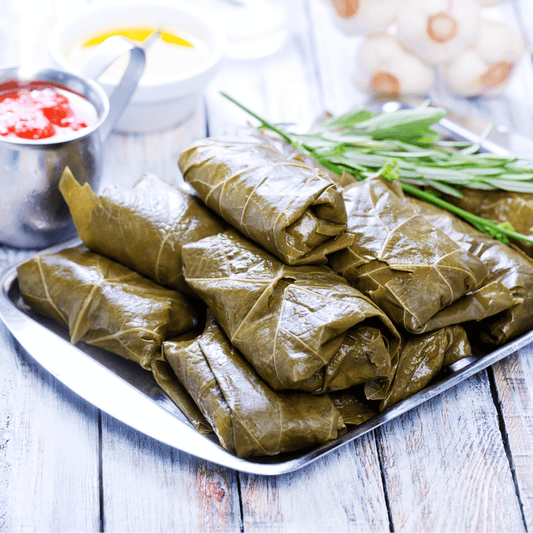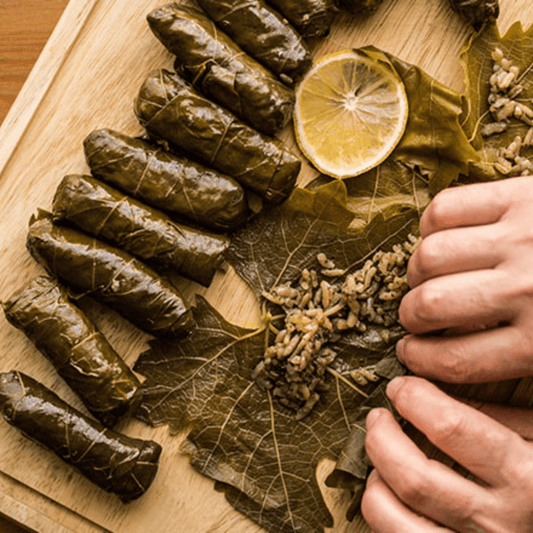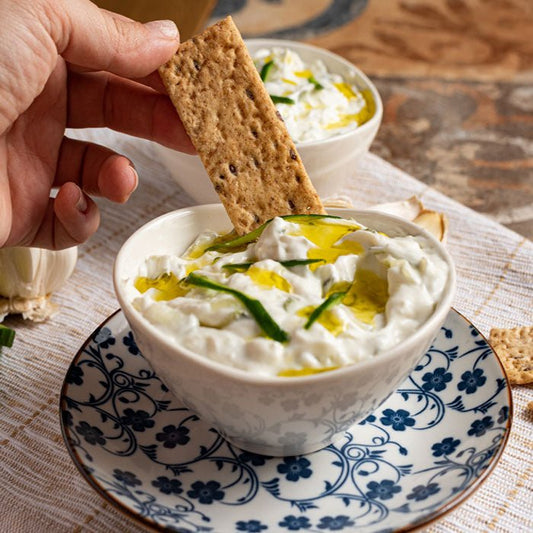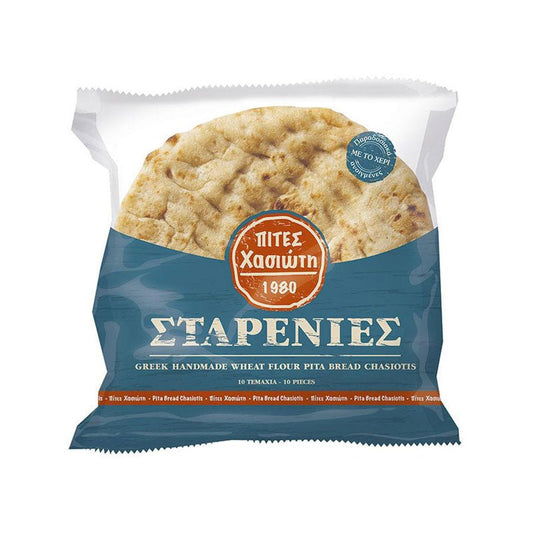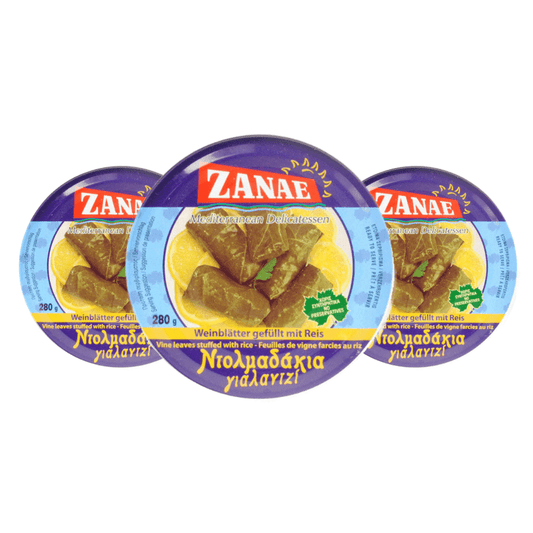Few things can compare to the divine taste of home-made Greek dolmades. The option to get them ready made are plenty. With a little effort, though, you can actually enjoy your own, very tasty vine leaves wraps, dolmadakia, and you will find these are far superior in taste.
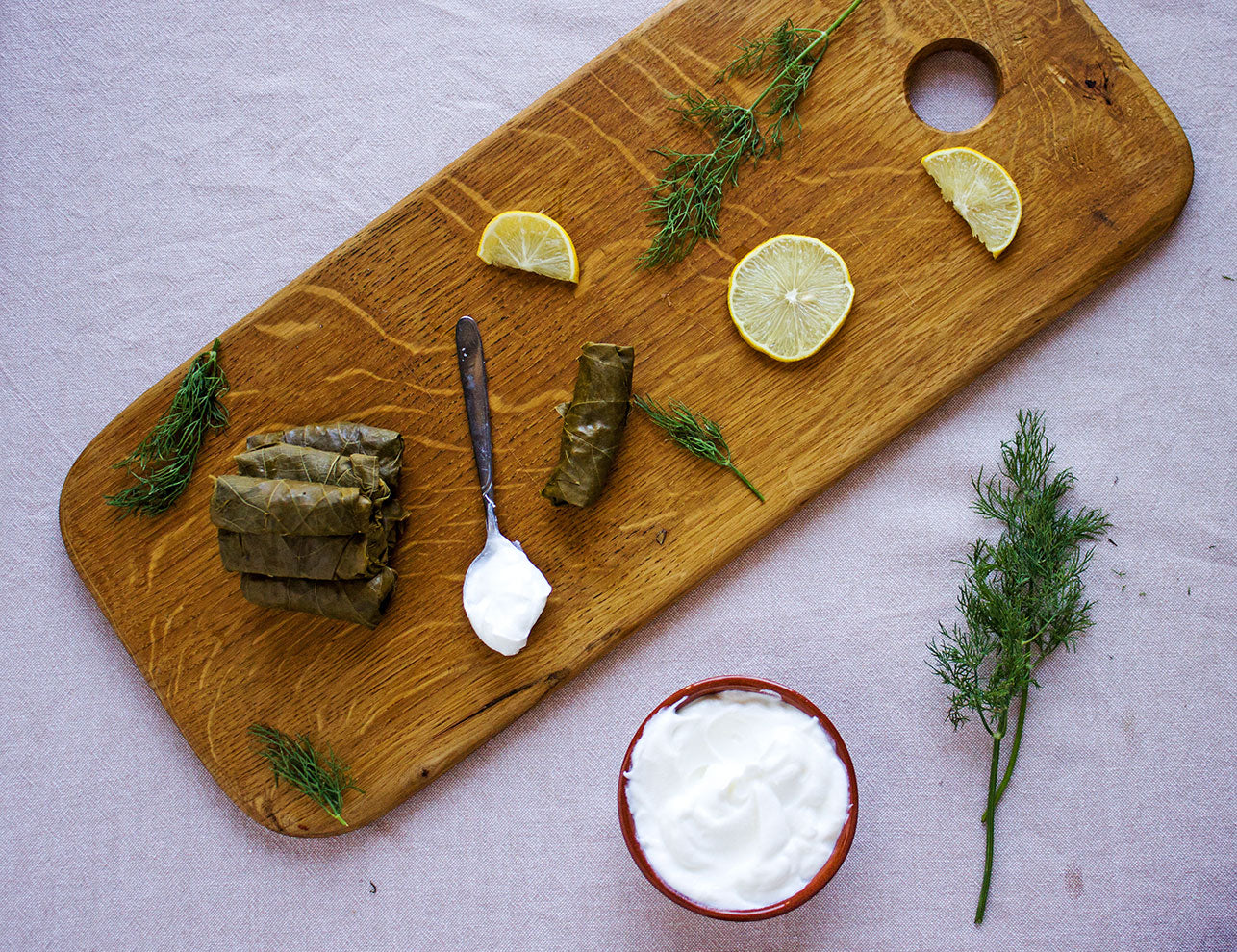
-

Preparation time
00:15
-

Cooking time
00:55
-

Serves
4
-

Cuisine
Greek
Ingredients
- 240g young vine leaves approx. 60
- 1 cup of rice, medium grain
- 1 large onion finely chopped
- 2 spring onions finely chopped
- 1 bunch of dill
- 1/2 bunch of parsley
- 5-6 spearmint leaves
- 200 ml extra virgin olive oil
- 2 lemons (for their juice)
- salt and pepper to taste
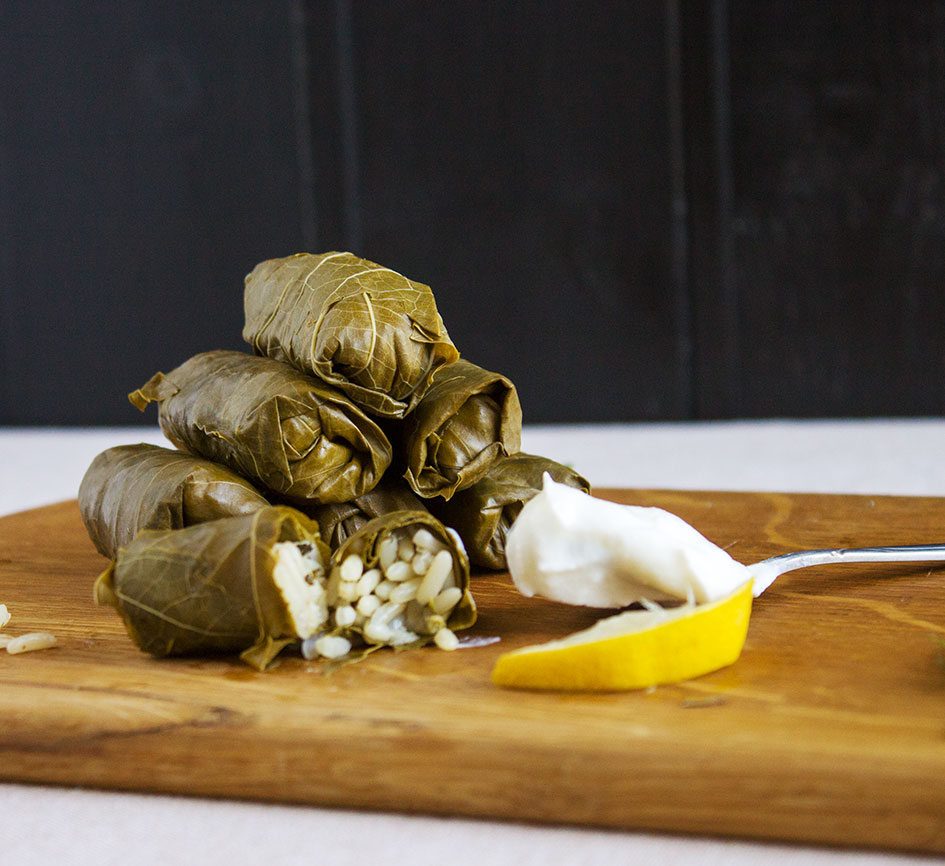
Dolmades are traditional grape leaves stuffed with rice
Dolmades are a recipe valid all year round, although the ingredients used, although specific, do not have a precise seasonality. Rice and vine leaves are, in fact, always available; just identify the right quality for this recipe.
What can vary throughout the year is the type of dolmades consumed. For example, during the period of Lent in which no meat is consumed, vegetarian dolmades are usually offered, which in Greek are also called gialantzi.
It is a lighter version but no less tasty. Usually, the lemon stands out as the prevailing taste in this type of recipe. During the rest of the year, meat is usually added to make them even better.
Each region also has its own type of dolmades, so it is not difficult to taste different varieties if you travel a bit around the country.
The origins of this recipe can be traced back to the Middle East. The Turkish translation of the word Dolmak, for example, means "to fill". More generally, all the Middle Eastern countries have their version and presence of this tasty recipe in their traditional cuisine.
Dolmadakia, traditionally, is one of the spring dishes. Imagine yourself picking through a handful of green, tender new leaves off the vines, getting a handful of herbs from the herb garden, and complementing these with a little bit of rice. If you fancy, you could add a bit of minced meat as well, but the truth is dolmadakia taste far better in their vegetarian version.
Dolmadakia is a very old dish; many say it goes as far back as Alexander the Great. In the many years the dish has been enjoyed, dolmadakia tend to be more of a cooking technique than just a tasty appetizer. Whilst in spring you wrap the vine leaves, in winter these are replaced by cabbage leaves. This is where the stuffing often changes from vegetarian to a hearty meat one, with just a little bit of minced meat.
But let’s go make them. Once you start on it, dolmadakia will become such a staple, you will never stop. Bonus, you can enjoy them either at room temperature or cold with a little bit of Greek yogurt to the side.

Dolmadakia recipe for 4 people
- Open the jar of vine leaves, place them in a strainer, and rinse very well before using.
- For the stuffing, finely chop and sauté your onion and spring onion. Add the herbs, mint, and parsley, finely chopped, and in a couple of minutes, stir in your rice.
- Add to this half the olive oil and hot water just enough to cover. Bring it to the boil and let it cook for 4-5 minutes in boiling water. Remove from the heat, cover with a clean towel, and let it stand for another 10 minutes.
- Once the rice and herbs mix is ready, add salt and pepper. You are ready to start stuffing your vine leaves.
- If there are any torn vine leaves, keep them aside, as you will need these to cover the bottom of your pot.
- Open each vine leaf with the veins surface facing you. Place a teaspoon of rice mix on the base of the leaf, fold in the sides, and then roll tightly. The thinner the dolmadaki, the more obvious the artistry of the cook. Aim for a tight and tidy roll.
- Once all the vine leaves are rolled, place a few leaves in the bottom of your pot and lay the ntolmadakia around in circles. Make sure there is as little free space between them as possible.
- Fill the pot with cold water, the remaining olive oil, and lemon juice until the dolmadakia are covered. Then add a heavy plate on top! Yes, it is safe to do, just be a little careful handling it when hot. If you forget it, you will have a very messy pot, dolmadakia tend to move when in the boil. Boil on low to medium heat for 30-40 minutes.
And remember, the dolmades have to be served warm!




